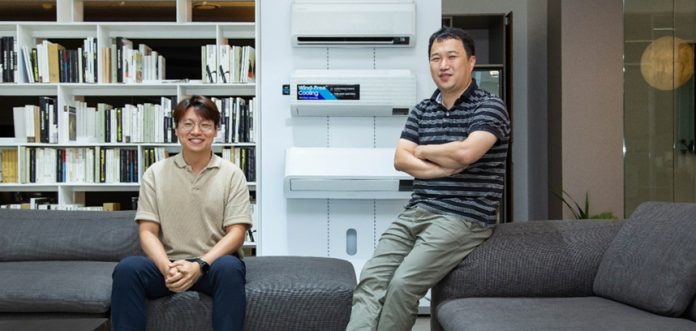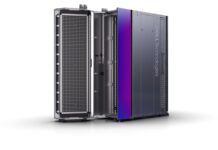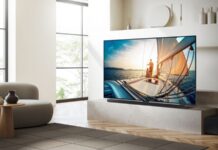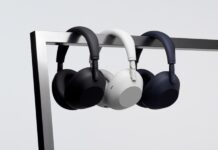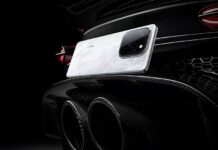The air conditioner is no longer just an appliance for the summer – in addition to cooling capabilities, air conditioners today also come with air purification and dehumidification functionalities. However, knowing that your air conditioner is working around the clock can naturally lead to concerns about high electricity bills and your home’s environmental footprint.
Understanding that this is a real worry for many consumers, Samsung works tirelessly to make its appliances more energy efficient. This is especially helpful in South Africa with rising energy costs. For example, Samsung’s Wind-Free™ Air Conditioner features Digital Inverter Boost technology, an energy-saving innovation that reduces the device’s energy consumption by up to 73% compared to traditional fixed-speed type air conditioners.1
Furthermore, the Wind-Free™ Air Conditioner’s Wind-Free™ Mode can even cut energy consumption by 77% compared to the unit’s Fast Cooling Mode, even while at maximum output. Samsung Newsroom sat down with two Samsung engineers to learn more about the Wind-Free™ Air Conditioner and its revolutionary energy-saving technologies.2

(From left) Kilsoo Son and Byoung-Ok Ahn, engineers at Samsung’s HVAC Solution R&D Lab
Reducing Electricity Usage With Digital Inverter Boost Technology
Just as the water in a waterfall cascades from higher ground to lower terrain, so does energy move from high to low. Air conditioners that use compressor technology to lower temperatures have to reduce heat through a process that runs contrary to this natural flow of energy – which is why air conditioners conventionally require a lot of energy to function. “The compressor serves as a pump that circulates the heat, moving matter from a lower point to a higher point,” explained Principal Engineer Byoung-Ok Ahn. “This means that the unit has to consume electricity.”
To help users save energy, Samsung adopted an inverter compressor – Digital Inverter Boost technology – that can regulate its own revolutions per minute (RPM) to maintain its energy use at maximum efficiency.
A fixed-speed compressor will run at maximum speed until the desired temperature is reached, and will then turn off once this is achieved. If the temperature exceeds this desired rate after the first round of cooling, it will switch on again at maximum output to lower the temperature. This repeated on-and-off process is incredibly energy-intensive, and also creates a fluctuation in room temperature as cooling is turned on and off again.
Inverter technology is more efficient since it simply slows down once the desired temperature is achieved and then only has to speed up slightly once the temperature goes up again, meaning that energy consumption is reduced by up to 73%. This process results in less temperature fluctuation, meaning that users can enjoy a consistently comfortable room temperature.

“The bigger the difference between the room temperature and the desired temperature, the higher the amount of energy that is consumed when the air conditioner is turned on,” noted Ahn. “When we compare the accumulated amount of consumed electricity between the fixed-speed compressor and the inverter compressor, the inverter type is notably more economical than the fixed-speed type since the latter turns on and off repetitively.”
Ahn also provided a tip for getting the most out of your air conditioner. “The most efficient way to use an air conditioner equipped with an inverter compressor is to set the desired temperature at between 24°C and 25°C (between around 75°F and 77°F) and to keep it on continuously when using it. Samsung’s inverter technology performs powerfully and efficiently because the total flux of its motor is maximised and the motor has multiple poles. Furthermore, this technology reduces vibration and noise for user peace of mind.”
Enjoying a Comfortable Breeze at All Times
Often with air conditioners, once the temperature in a room has been reduced to the desired temperature, the continued airflow from the indoor unit can become uncomfortably chilling. Continuous, direct exposure to cold wind can dry out the respiratory system and affect user’s health, making them more sensitive to illnesses. Homes with young children or family members who suffer from respiratory symptoms may be wary about keeping their air conditioner on continuously.
“The Wind-Free™ Air Conditioner’s Wind-Free™ Mode was developed to alleviate this inconvenience. The 2020 version of this air conditioner features 23,000 micro air holes, which gently disperse the cold air evenly throughout a room. This way, users can enjoy a cool air stream without being directly exposed to cold wind,” explained Ahn. “Wind-Free™ Mode can even cut energy consumption by 77% compared to the unit’s Fast Cooling Mode, even while at maximum output.”
Another unique feature of Samsung’s Wind-Free™ air conditioner is its bigger inlet and fan which allow for more air to be drawn in at once. “The air conditioner’s fan, the diameter of which is 15% bigger than conventional fans, along with the optimized width and angle of the outlet, means that energy consumption is reduced by 10%. Furthermore, air is cooled down to the desired temperature even faster,” said Engineer Kilsoo Son.

※ Figures drawn in comparison to the existing AQV12TWS model
The air conditioner’s inverter and its Wind-Free™ technology work together in synergy to create even higher efficiency when bringing users comfort at home. Once the desired room temperature is reached with the air conditioner’s powerful and fast cooling technology, the unit switches to Wind-Free™ Mode, slowing down the speed of the compressor while keeping the air cool, comfortable and quiet while minimising electricity consumption.
Changing Modes Automatically for Ultimate User Peace of Mind
As well as its inverter technology and Wind-Free™ Mode, the 2020 Wind-Free™ Air Conditioner features other innovative features designed to help reduce users’ electricity bills. The unit’s ECO Mode also reduces the air conditioner’s RPM by up to 35% of its regular rate to reduce electricity consumption if it detects that there are few people in the room or that the ambient temperature is low. 3

* 2020 Wind-Free™ Air Conditioner features motion sensor
The AI Auto Cooling feature learns users’ preferred temperature and creates an optimal operation mode. “The AI Auto Cooling feature will provide users with an optimal setting,” explained Son. “The more users use it, the more it learns about your preferences. I encourage users to use this feature often so that they can easily and automatically enjoy their favourite temperatures without having to flip through settings, wasting energy.”
Users can reduce energy consumption even more with SmartThings. Users can turn off their air conditioner remotely and keep track of their daily, weekly and monthly electricity usage with the SmartThings app. In addition, the ‘My Schedule’ feature of SmartThings lets users set their air conditioner’s operation time, mode, temperature and fan speed remotely.
A Better Future for All With Air Conditioner Innovation
Higher electricity bills are not the only concern when it comes to energy consumption – many consumers are also concerned about how their appliance usage can impact the environment. This is why Samsung strives to make all of its devices, including its air conditioners, more energy-efficient and sustainable for the future. “While we work to provide optimum air cooling solutions, we also strive to ensure that our leading technologies remain energy-efficient,” noted Ahn.
Son echoed this commitment to sustainability. “We will continue to work to develop air conditioners that provide maximum comfort to users at minimum cost while also having a positive impact on our environment, not just for today, but also for the future.”
1 Tested on the AR09TXCAAWKNEU model compared with the Samsung conventional model AQ09TSLXEA.
2 Tested on the AR07T9170HA3 model, based on the power consumption of Fast Cooling mode vs. Wind-Free™ Cooling mode.
3 Tested on AR07T9170HA3, based on the power consumption of Fast cooling mode vs. ECO mode.
Provided by Samsung SA


